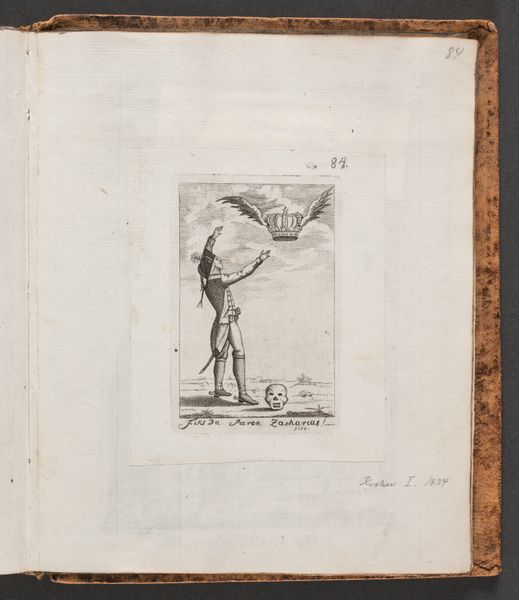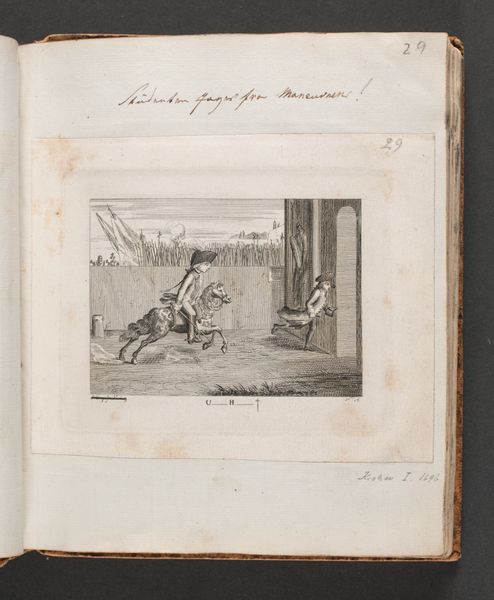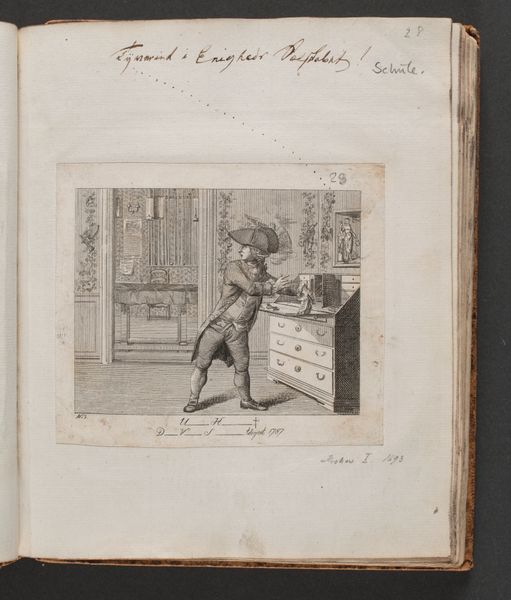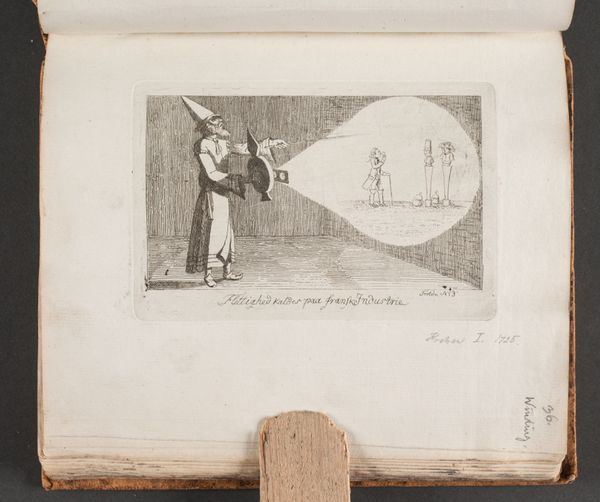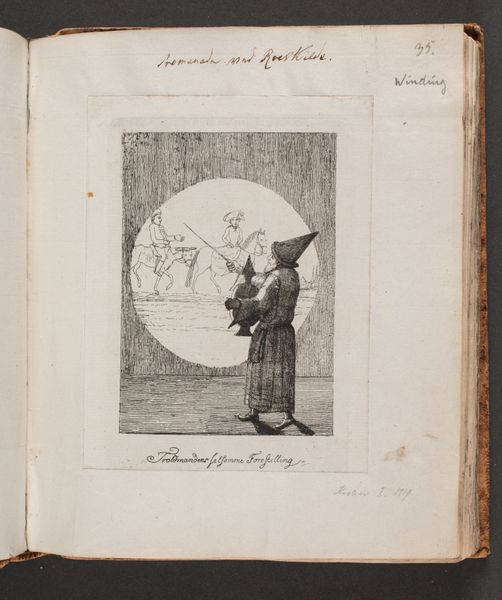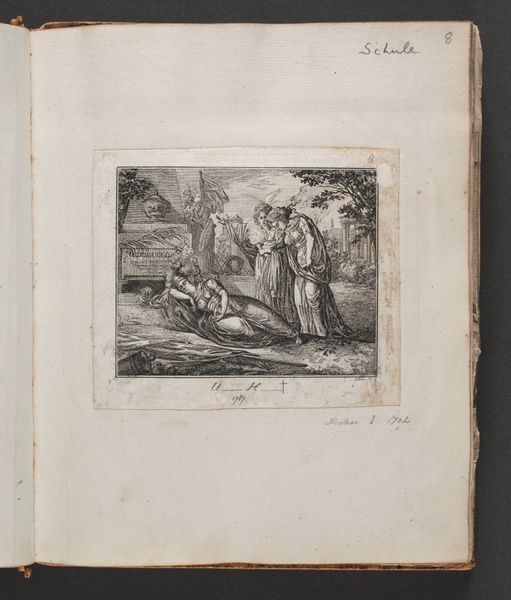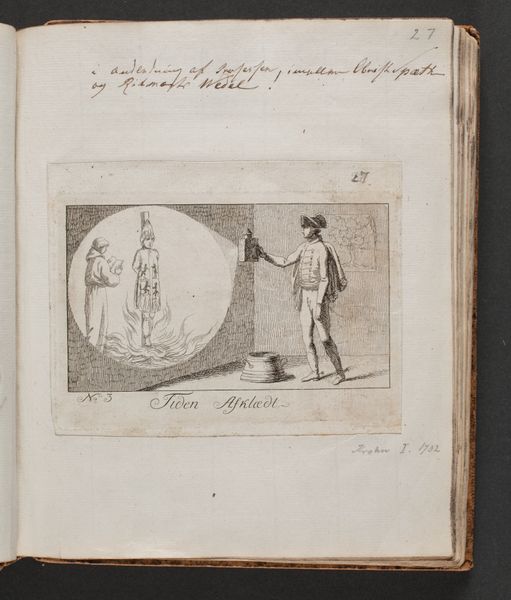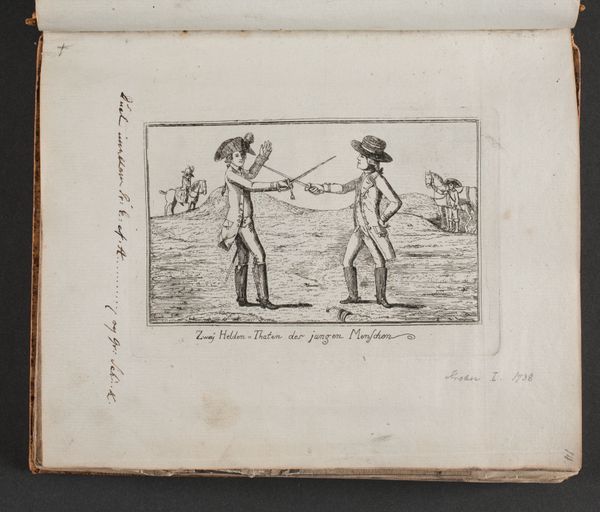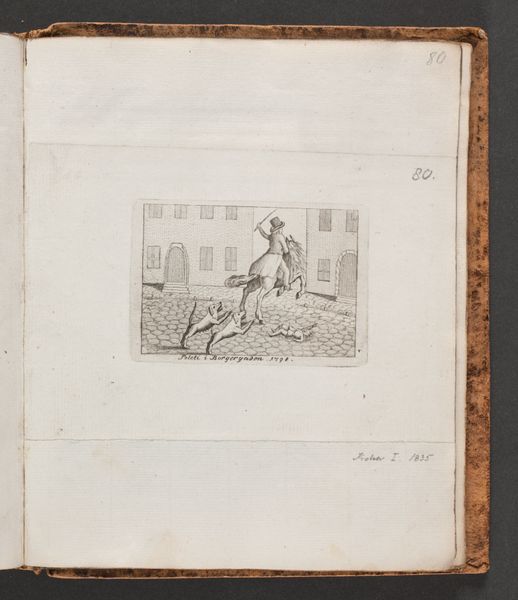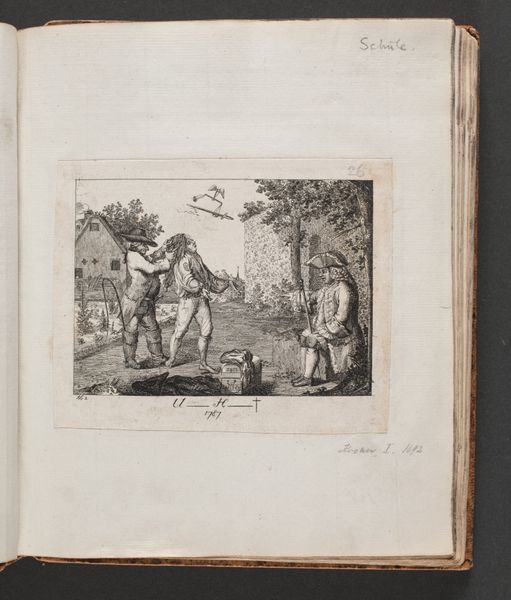
drawing, print, etching
#
drawing
# print
#
etching
#
15_18th-century
Dimensions: 100 mm (height) x 76 mm (width) (bladmaal)
Curator: Ah, yes. This etching by Frederik Ludvig Bradt, titled "Tag dig i agt," was created in 1787. It's currently held here at the SMK. Editor: Immediately striking – it has such an unsettling, slightly satirical feel to it, doesn’t it? Almost like a stage set, the figures presented so plainly beneath the arboreal backdrop. Curator: Absolutely. Given the period, the context surrounding political and social satire is vital. We can analyze it through the lens of class and power dynamics, questioning what exactly the artist seeks to critique about 18th-century Danish society. Editor: Let's not overlook the material properties too quickly. It's an etching, yes, but that laborious process of acid on metal provides that rather distinctive crispness, doesn’t it? Notice how that technique emphasizes every line on those military uniforms, lending them such weight. The print almost monumentalizes them. Curator: The uniforms and accoutrements are certainly emphasized to communicate social roles; the man pointing may suggest an asymmetrical power relation when assessed alongside that title–"Tag dig i agt" or, “Beware” –which posits ideas of threat or warning in the encounter, particularly as those interactions are often tied to issues of social injustice and coercion, in art and in lived reality. Editor: The means by which Bradt produces this warning through an exacting, deliberate mode such as etching—isn't that telling? Consider the labor of its crafting! A material approach helps to underscore that this artwork’s cautionary message resonates far beyond simply this imagined interaction between the two characters depicted. Curator: True. Placing it within larger intersectional analyses–gender, race, socio-economics–opens richer interpretive possibilities of what it means to be precarious during times when access to privilege relies heavily on belonging to select and powerful institutions or groups. Editor: Reflecting upon the method underscores its capacity for wide-scale production too. Perhaps Bradt aims not just to illustrate one interaction, but the widespread material conditions, processes and effects by which societal warnings spread among groups or populations through distribution methods of the era like mass printed images. Curator: The convergence of materials, method, and societal commentary yields so much insightful possibility. It speaks volumes about the work itself. Editor: Yes, and prompts new awareness about how the hand crafted print functions culturally and materially too, then as it does now.
Comments
No comments
Be the first to comment and join the conversation on the ultimate creative platform.

